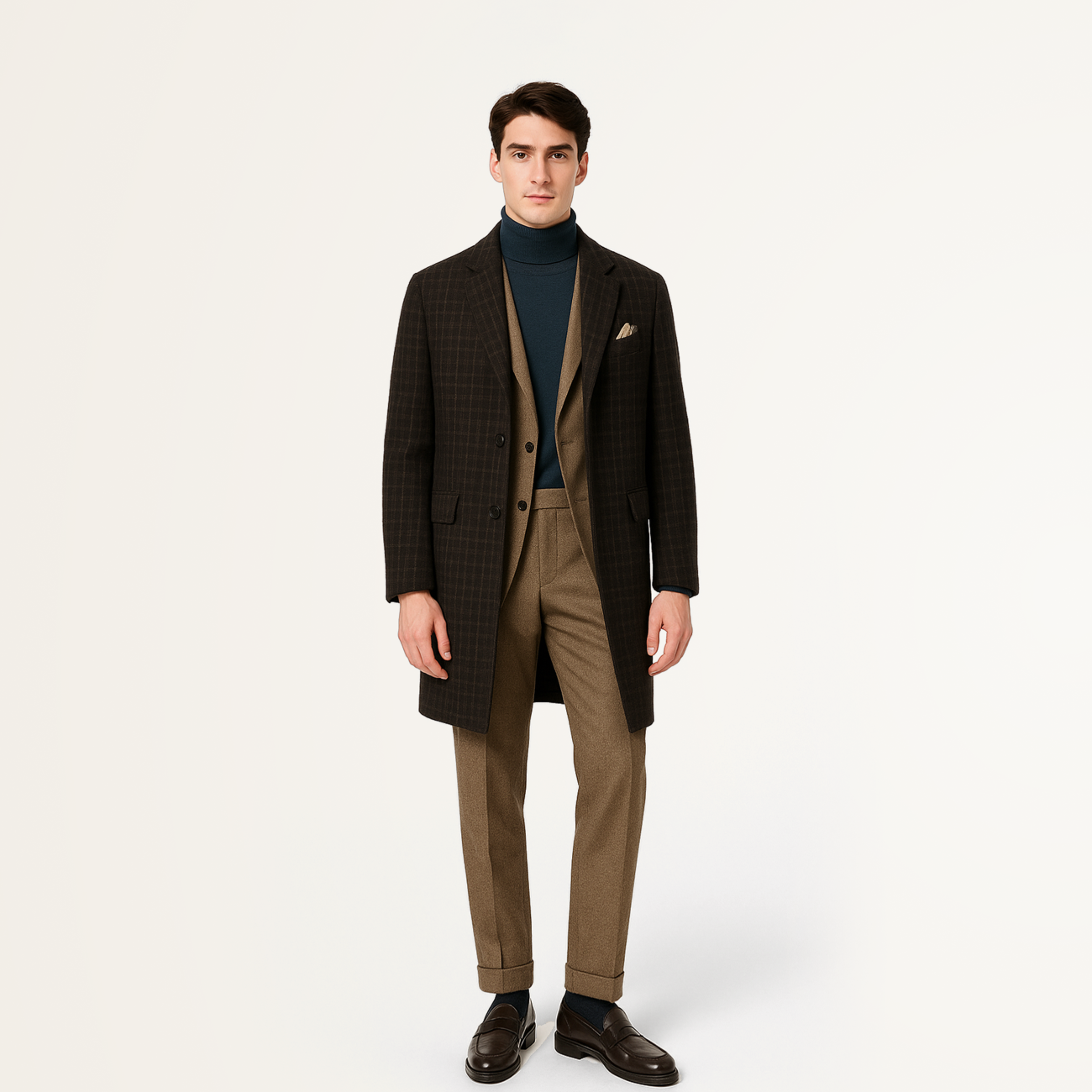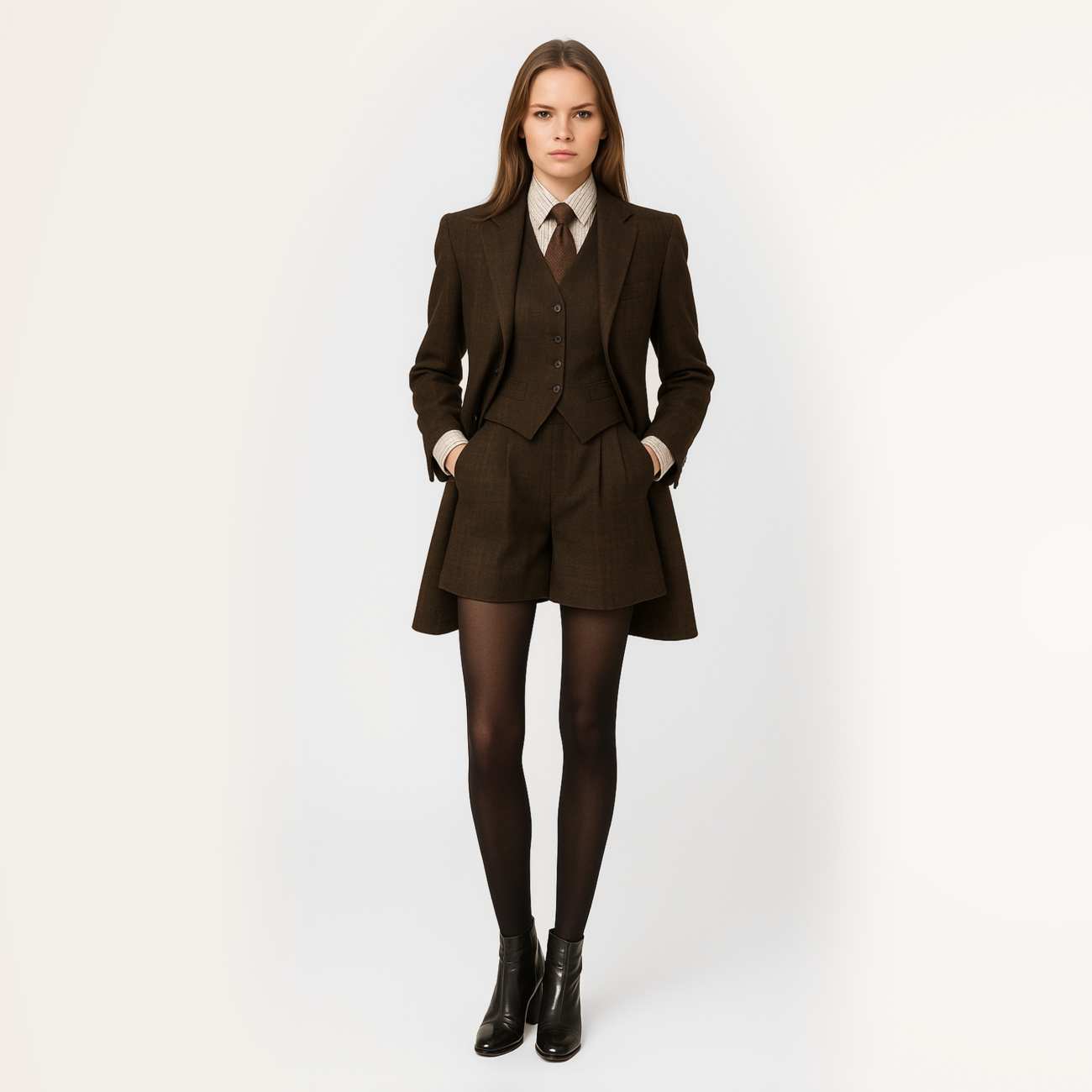British
The philosophy of British style lies in the balance between tradition and individuality, where quality and attention to detail take top priority. It is rooted in restraint, elegance, and refinement, yet allows for personal expression through subtle details. British style doesn’t chase trends—it stands for timelessness. It blends formality with comfort, emphasizing status while remaining practical and wearable.
History
The history of British style in fashion is deeply rooted in centuries-old traditions. Shaped by the UK’s climate and cultural heritage, it has played a pivotal role in developing a look that blends understated elegance with practicality.
In the 18th century, the British aristocracy began setting the tone for fashion, placing emphasis on refinement and high-quality materials. During the Regency and early Victorian eras, men’s suits became the ideal of elegance—muted colors, precise tailoring, and fabrics like tweed and wool conveyed a sense of status. British dandies, such as Beau Brummell, introduced the culture of impeccably tailored suits and a meticulous approach to personal grooming.
The Victorian era brought even more formality and structure to clothing—for both men and women. Men’s wardrobes were dominated by tailcoats and tuxedos, while women’s fashion emphasized corseted silhouettes and voluminous skirts.
In the 20th century, with the rise of sportswear and the influence of military uniforms, British fashion evolved toward greater practicality. Tweed suits, trench coats, and rubber boots became wardrobe staples. Military garments like the trench coat found a second life in everyday fashion. Iconic brands such as Burberry and Barbour cemented British style as a symbol of quality and durability.
Today, British style continues to evolve while staying true to its traditions. It brings together elements of classic tailoring, functional design, and modern aesthetics—remaining a lasting symbol of sophistication and timelessness in fashion.
Signature elements of the style
Color palette
British style leans toward restrained and natural shades. Key colors include deep tones of brown, green, gray, navy blue, and burgundy. Neutral hues such as black, white, and beige are also frequently used, highlighting the elegance and sophistication of the look.
Prints
Classic prints are essential to British style. These include large and small check pattern, tartan, Prince of Wales check, herringbone, houndstooth, pinstripes, and argyle.
Textures
Fabrics associated with British style are known for their density and quality. Tweed, wool, cashmere, and cotton are foundational materials that provide both elegance and practicality — especially suited to the British climate. These textures offer warmth, comfort, and long-lasting durability.
Cuts & silhouette
British tailoring is always precise, structured, and refined. The fit is moderately tailored to accentuate the body without being restrictive.
The base of the style is the classic British two-piece or three-piece suit (blazer, waistcoat, and trousers or a below-the-knee skirt).
Suits feature clean, structured lines that highlight the silhouette, often with fitted jackets and slim trousers. Timeless staples such as double-breasted blazers, belted trench coats, midi skirts, and elegant coats with sharp shoulders remain key elements in the British style wardrobe.
Wardrobe essentials
- Trench coat
- Accessories: flat caps, suspenders, felt hats, pocket squares, wool bow ties, scarves
- Tweed blazer
- Three-piece suit
- Checked shirt
- Pencil skirt
- Wool sweaters
- Poncho
- Coats such as a Chesterfield or Peacoat
- Footwear: oxfords, monk straps, desert boots, brogues, Hunter boots, Chelsea boots
Substyles
- British Country Style: Rooted in the practical clothing of hunting and rural life, this style blends functionality with a relaxed elegance. Expect waxed jackets, tweed blazers, riding boots, and earthy tones. It's a celebration of tradition, nature, and timeless comfort.
- Dandy: A refined and elegant style that originated in 19th-century Britain. Dandyism is marked by immaculate tailoring, attention to detail, and a meticulously maintained appearance. Key elements include fitted blazers, waistcoats, bow ties, hats, and polished shoes. The dandy seeks the perfect balance between classic style and individuality, embodying aristocratic charm and luxurious restraint.
Email: support@belt-app.com


















